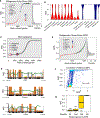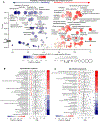Uncovering the essential genes of the human malaria parasite Plasmodium falciparum by saturation mutagenesis
- PMID: 29724925
- PMCID: PMC6360947
- DOI: 10.1126/science.aap7847
Uncovering the essential genes of the human malaria parasite Plasmodium falciparum by saturation mutagenesis
Abstract
Severe malaria is caused by the apicomplexan parasite Plasmodium falciparum. Despite decades of research, the distinct biology of these parasites has made it challenging to establish high-throughput genetic approaches to identify and prioritize therapeutic targets. Using transposon mutagenesis of P. falciparum in an approach that exploited its AT-rich genome, we generated more than 38,000 mutants, saturating the genome and defining mutability and fitness costs for over 87% of genes. Of 5399 genes, our study defined 2680 genes as essential for optimal growth of asexual blood stages in vitro. These essential genes are associated with drug resistance, represent leading vaccine candidates, and include approximately 1000 Plasmodium-conserved genes of unknown function. We validated this approach by testing proteasome pathways for individual mutants associated with artemisinin sensitivity.
Copyright © 2018 The Authors, some rights reserved; exclusive licensee American Association for the Advancement of Science. No claim to original U.S. Government Works.
Conflict of interest statement
Figures






Comment in
-
Indispensable malaria genes.Science. 2018 May 4;360(6388):490-491. doi: 10.1126/science.aat5092. Science. 2018. PMID: 29724941 Free PMC article. No abstract available.
References
-
- Ghorbal M et al., Genome editing in the human malaria parasite Plasmodium falciparum using the CRISPR-Cas9 system. Nature biotechnology, (2014). - PubMed
Publication types
MeSH terms
Substances
Grants and funding
LinkOut - more resources
Full Text Sources
Other Literature Sources
Molecular Biology Databases

